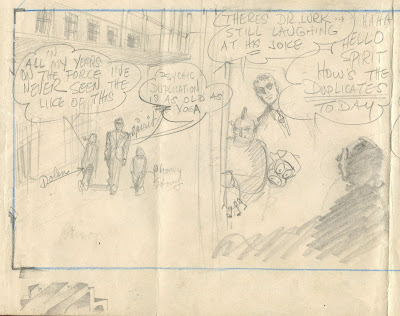Tom Fluharty is probably best known for his magazine covers using the classical oil painting techniques of the Flemish masters, but his preparatory pencil sketches-- slashing, vigorous drawings-- are a whole different kind of excellent:
 |
| Detail of McCain sketch |
Fluharty wrote, "How Beauty is found in a graphite line or ink scratch is beyond me, but one thing I know is when I behold a sketch, beautifully executed, it's a beautiful thing."
Fluharty is a master of facial expressions. Devoutly religious and traditional in his methods, he nevertheless manages to create some of the most hilariously wicked portraits I have ever seen.
In the margins of his sketches, we can see Fluharty exploring facial expressions and gestures in tiny thumbnails.
 |
| Even these small doodles (two inches tall) convey knowledge and strength. |
More recently, Fluharty has branched into digital media where somehow he still manages to capture those imaginative facial expressions:
I was afraid that when he began working digitally it would rob his dynamic sketches of some of their vitality. But his drawing skills are so strong, he has adapted to digital media beautifully:
Fluharty recently began illustrating his line of children's books under the sobriquet
T. Lively. His web site contains a collection of great pictures:
 |
| Oil study for children's book illustration |
Like Fluharty's other work, these books will be worth watching.







.jpg)
.jpg)

.jpg)











































